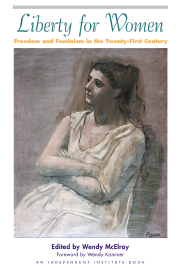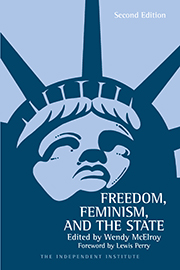Children who witness domestic violence are doomed to repeat ‘the cycle’ and become either abusers or victims as adults. This alarming claim is one of several underlying assumptions that define how society has approached domestic violence for decades.
Researchers are now questioning and testing these assumptions.
Last month, the Society for Academic Emergency Medicine—a national non-profit organization of over 6,000 academic emergency physicians, residents and students—held its annual meeting.
Researchers there reported on the results of testing the ‘inevitable cycle’ hypothesis. Or, rather, they tested a more reasonable and limited version of it; is a child who witnesses domestic violence more likely to be victimized as an adult?
The researchers studied 280 consecutive and, so, random people who sought out emergency care in Albuquerque, N.M. Using a confidential computer screen that minimized interaction with and bias from researchers, each person answered a series of questions that included ones on their childhood history.
The conclusion:
Child witnesses were not more likely to be “positive” for ongoing domestic violence as adults “although there was a trend in that direction.” The report’s co-author, Dr. Amy A. Ernst, stated that there was not “necessarily a correlation” between witnessing domestic violence as a child and becoming a victim as an adult.
Another study is planned to test the claim that child witnesses are more likely to perpetrate domestic violence as adults.
Careful testing and measured statements are precisely what domestic violence now requires after decades of being politicized with many of its claims presented as near-dogma.
One assumption has received more debate and backlash than any other. Namely, the idea that men are perpetrators, women are victims.
Researchers and men’s rights activists are successfully expanding the image of a domestic violence victim to include men. Other researchers are skeptical of the politics that may underlie this shift.
Nevertheless, even skeptics are acknowledging male victims. For example, Professor Michael S. Kimmel of the State University of New York compared and contrasted research findings on male domestic violence victimization in his 2001 report “Male Victims of Domestic Violence: A Substantive and Methodological Research Review.”
The pro-feminist Kimmel concluded, “I would hypothesize that, including assaults and murders by ex-spouses, spousal murder, and sexual assault, the gendered incidence of ‘family conflict’ would be closer to one-fourth women [as perpetrators] and three-fourths men.”
The end goal for some domestic violence activists is the public acceptance of men as victims who deserve the same treatment as women. To me, this is merely a necessary beginning because I believe the treatment being offered to women is flawed and often harmful. Offering it ‘as is’ to men would merely expand the problem. All the current assumptions of domestic violence should be challenged and tested in order to benefit all victims, both male and female.
What are some of those other assumptions?
One assumption is that only victims of domestic violence have a right to speak out.
My experience of domestic violence was so severe that it permanently blinded me in one eye. But being on the wrong end of a fist didn’t make me an expert on anything other than how much it hurts. Being punched didn’t imbue knowledge any more than having cancer makes you able to cure disease.
Moreover, those asserting the ‘authority of victimhood’ often state that the existence of domestic violence impoverishes us all. If we are all victims, then we should all be encouraged to speak out.
Another assumption is that someone who hits once will hit again.
(Culturally speaking, this is always stated as ‘a man who hits once...’) The claim makes sense only if you view all abusers as interchangeable units about whom the same statement is true.
Ask yourself, is a man who slaps his wife after discovering an infidelity the same as one who does so for the pleasure of inflicting pain? Is a woman who flies into a drunken rage the same as one who uses violence to get her own way?
The betrayed man and the drunken woman are reacting to circumstances that may never reoccur. The sadistic man and manipulative woman are expressing character traits. It is far from clear that all four of them are destined to ‘hit again.’
According to a third assumption, it is always wrong for a victim to stay. As a general rule, people should act to avoid physical harm and, so, this assumption has a surface value of truth. But what if the abuser is a loved one who is going through a passing crisis—for example, the loss of a job.
What if he or she is genuinely remorseful and trying to change; do you dismiss years of a good relationship? Again, the answer is far from clear.
Yet another assumption seems doubtful. It is the claim that victims should not be permitted to press or drop charges against their abusers.
Instead, that choice is handed over to police and the legal system. The reasoning here is that victims are so intimidated by abusers that they are often emotionally incapable of doing the ‘right thing.’
The reasoning is flawed. It supposes that arresting an abuser is always the best option and that the law can properly force dissenting victims to ‘do the right thing’ for themselves. But many people become victims precisely because they have lost choice and power over their own lives.
How can laws that perpetuate their lack of choice act to empower them? Taking power away from victims in the name of victims’ rights seems to be a legal sleight-of-hand.
Questioning every theory and ‘fact’ of the current approach to domestic violence is necessary if the issue is to move into a new century. For the sake of women, men and children, the same statements cannot simply be repeated. We must find out if they are true.









